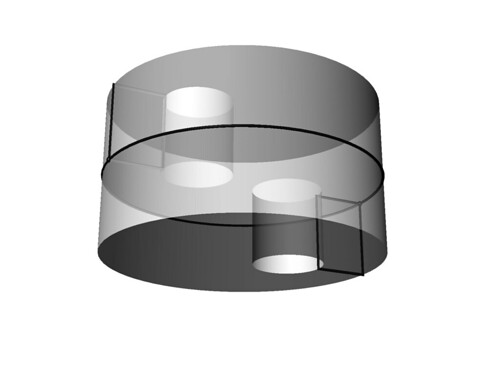Irreducible homology 3-spheres that bound smooth contractible manifolds
Yes, there's loads of other contractible 4-manifolds bounding homology spheres with other geometries.
For example $1$-surgery on the Stevedore knot is a hyperbolic manifold with volume $1.3985\cdots$. This bounds a contractible manifold by the same kind of arguments Casson and Harer used to cook up their big list of Mazur manifolds. There are other examples like this that occur in my arXiv preprint: http://front.math.ucdavis.edu/0810.2346 Some are geometric, some have incompressible tori.
I don't think any Nil manifolds bound contractible 4-manifolds. Crisp and Hillman determined all the Nil manifolds that embed smoothly (or topologically) in the $4$-sphere. The only Nil manifolds on that list have non-trivial homology. Crisp & Hillman "Embedding Seifert fibred 3-manifolds and Sol-manifolds in 4-space".
If you have a contractible 2-complex, then you can construct many different 4-manifolds with homology sphere boundary, and I think it is flexible enough that you can make them hyperbolic. Take the 1-skeleton of the complex, and thicken it to a 4-dim. handlebody, whose boundary is $\sharp _k S^2\times S^1$. The boundaries of the 2-cells in the complex may be realized by loops in $\sharp_k S^2\times S^1$ realized by a link, and one attaches a 2-handle to each such link. The resulting manifold is obtained by $0$-framed surgery on this link. By choosing different such links representing the same homotopy class in the 4-handlebody, I think you can arrange a manifold to be hyperbolic.
For example, if the 2-complex is a disk, then the 1-skeleton is $S^1$, so you want to take a knot in $S^2\times S^1$ which meets $S^2$ algebraically once. I think 0-framed surgery on a sufficiently complicated such knot will usually give a hyperbolic 3-manifold bounding a contractible 4-manifold.
This is a variation of Agol's answer. Take any contractible special polyhedron $X$, that is a compact polyhedron such that every point has a neighborhood of one of these three types:

(source: unipi.it)
and such that the natural stratification is a cellularization, i.e. all the points as in the center (right) form disjoint open 1-cells (2-cells).
A famous example is Bing's house: 
Now thicken 4-dimensionally the polyhedron $X$. You do this first by thickening the 1-skeleton, and this can be done in a unique way (we only construct orientable 4-manifolds). The rest can be thickened in various ways, but for simplicity we restrict ourselves only to locally flat thickenings, i.e. thickenings that locally lie in a (smooth) 3-dimensional slice (a very reasonable assumption). As shown by Turaev, the locally flat thickenings are parametrized by assigning a (half-)integer at each 2-cell of the polyhedron (these numbers are called gleams), which measures the "Euler number" of the thickening. This is very similar to the description of the 4-manifold via a Kirby diagram. For instance in the Bing's house there are three 2-cells and each needs to be coloured by an integer.
The boundary 3-manifolds of all these thickenings are all obtained by Dehn surgery on a fixed link $L$ in a connected sum $\sharp_h(S^2\times S^1)$ of some $h$ copies of $S^2\times S^1$. Different gleams yield different surgeries on the same link $L$. The nice thing here is the following: Costantino and Thurston have shown that the link $L$ is always hyperbolic; the complement $\sharp_h(S^2\times S^1)\setminus L$ can be constructed by gluing some regular ideal octahedra. You need two regular octahedra for each vertex of $X$, so that the volume of the hyperbolic manifold is precisely twice the volume of the regular ideal hyperbolic octahedron times the number of vertices of $X$.
Now as Agol said you only need to use Thurston Dehn filling theorem that ensures you that by avoiding a finite set of gleams on each face the resulting 3-manifold is hyperbolic. That is, the boundary of the resulting thickened 4-manifold is hyperbolic. Moreover the 6 theorem tells you that if all the gleams are bigger than 6 you are certainly done (because we know very well how the cusps are). Hence you can decorate Bing's house with a triple of integers bigger than 6 and you get plenty of hyperbolic 3-manifolds bounding contractible 4-manifolds.